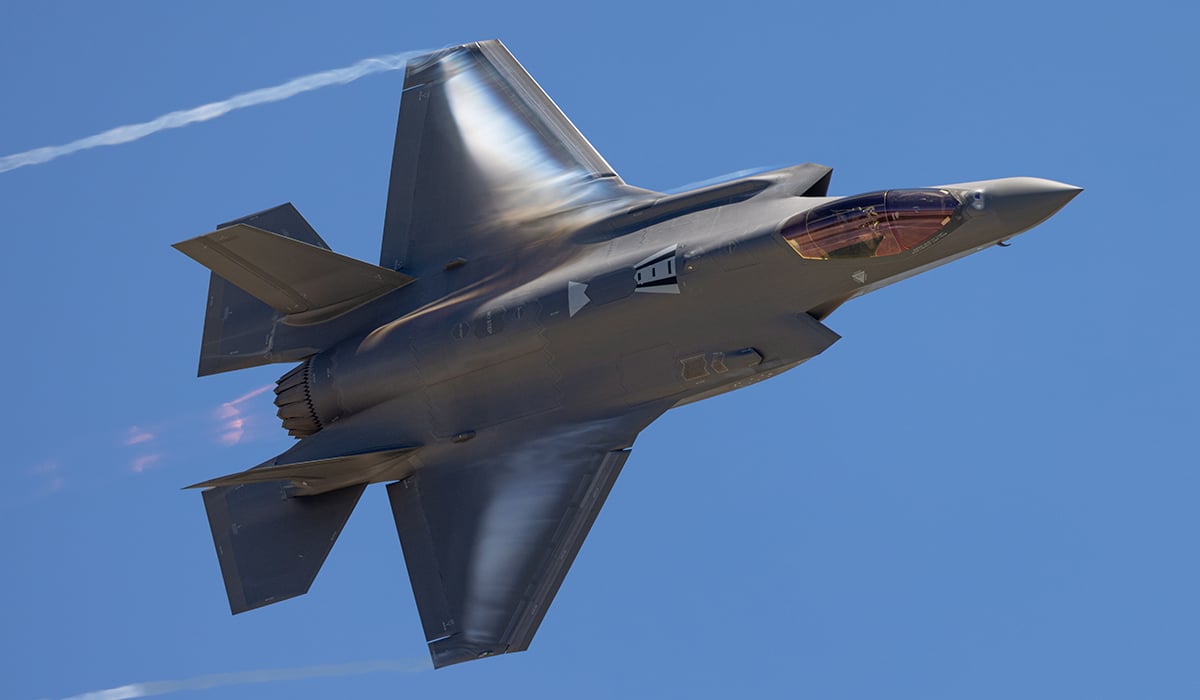SOURCE: IDRW.ORG


In a recent statement, India’s Defence Secretary RK Singh addressed speculation surrounding the potential sale of Lockheed Martin’s F-35 Lightning II stealth fighter jets to India, clarifying that the United States has not yet provided any concrete proposal on the matter. Speaking to the press, Singh noted that due to the absence of a formal offer, no discussions have been planned or taken place between the two nations regarding the acquisition of the advanced fifth-generation fighter. His comments come amid growing interest in bolstering India’s air combat capabilities and ongoing deliberations about modernizing the Indian Air Force (IAF) fleet.
Singh’s remarks were measured, reflecting a cautious stance on what has been a topic of intrigue in defense circles. “Let’s see what happens as and when discussions take place. I am sure everybody will come to know about it,” he said, signaling that any future developments would be transparent and subject to due process. His statement appears to temper expectations of an imminent deal, while leaving the door open for dialogue should a formal proposal materialize.
The F-35, a family of single-seat, single-engine, all-weather stealth fighters, is widely regarded as one of the most advanced combat aircraft in the world. Its stealth capabilities, sensor fusion, and network-centric warfare features make it a coveted asset for air forces globally. For India, acquiring such a platform could significantly enhance its strategic deterrence, especially in light of regional security challenges posed by adversaries with advanced air forces. However, the absence of a concrete proposal suggests that any integration of the F-35 into the IAF remains a distant prospect for now.
The F-35 program is tightly controlled by the US government, with exports limited to close allies and partners under stringent conditions. India, while a strategic partner, has historically relied on a mix of Russian, French, and indigenous platforms for its air force. The IAF currently operates a diverse fleet, including the Su-30 MKI, Mirage 2000, Rafale, and the indigenous Tejas, alongside aging MiG-21s that are being phased out. The potential inclusion of the F-35 could diversify this mix but would require navigating interoperability challenges and aligning with India’s broader push for self-reliance in defense manufacturing under the “Make in India” initiative.
The F-35’s advanced capabilities make it an attractive option for the IAF, which faces a shortfall in fighter squadrons—currently around 31 against a sanctioned strength of 42. The IAF has been vocal about the need to modernize its fleet, especially in the context of China’s growing air power, including its own fifth-generation fighters like the J-20, and Pakistan’s acquisition of modern platforms like the J-10CE. The F-35’s stealth features, electronic warfare capabilities, and ability to integrate with NATO-standard systems could provide the IAF with a qualitative edge in beyond-visual-range (BVR) engagements and networked warfare.
However, several factors complicate the prospect of an F-35 acquisition. Cost is a major consideration—the F-35’s unit price, depending on the variant and configuration, ranges from $80 million to $110 million, with additional expenses for training, infrastructure, and lifecycle maintenance. Moreover, India’s ongoing investment in indigenous programs like the Advanced Medium Combat Aircraft (AMCA)—a fifth-generation stealth fighter under development by the DRDO—raises questions about whether the F-35 aligns with national priorities. The AMCA, expected to enter service in the mid-2030s, is seen as a cornerstone of India’s self-reliance goals, and committing to a foreign platform like the F-35 could divert resources and focus.
NOTE : Article cannot be reproduced without written permission of idrw.org in any form even for YouTube Videos to avoid Copy right strikes. Websites doing illegal reproductions will get DMCA and Legal Notices.